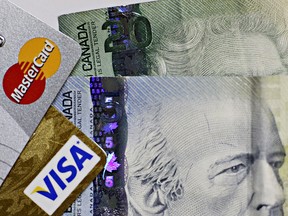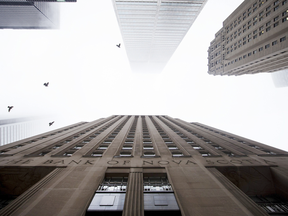If not for worries over inflation, Canada’s outlook would be almost entirely positive. To be sure, the floods in British Columbia and the new COVID-19 variant raise questions about the immediate future. “The devastating floods in British Columbia and uncertainties arising from the Omicron variant could weigh on growth by compounding supply chain disruptions and reducing demand for some services,” the Bank of Canada said.
Still, Canada’s economy will be confronting those headwinds with considerable momentum. Statistics Canada reported on Dec. 7 that exports surged 6.4 per cent in October from September, to a record $56.1 billion. The trade data followed more evidence that the country’s labour market is well on its way to the “complete” recovery that Macklem has said he wants to orchestrate. Statistics Canada said on Dec. 3 that employers added 154,000 positions last month, pushing employment to where it would have been if the trend in February 2020 hadn’t been interrupted by the COVID crisis. The jobless rate plunged to six per cent, a level that some economists associate with full employment, a theoretical condition where everyone who wants a job has one, and additional hiring would put upward pressure on inflation.
“Recent economic indicators suggest the economy had considerable momentum into the fourth quarter,” the central bank said. “This includes broad-based job gains in recent months that have brought the employment rate essentially back to its pre-pandemic level. Job vacancies remain elevated and wage growth has also picked up.”
Mounting evidence that the recovery from the COVID recession is secure will allow policy-makers to shift their attention to prices. A year ago, the worry was deflation, which is why the central bank dropped its benchmark interest rate to 0.25 per cent and began creating billions of dollars per week to purchase government bonds, an aggressive form of monetary policy called quantitative easing, or QE. The strategy successfully staved off a disinflationary forces, but timing the return to normalcy was always going to be difficult.

The Bank of Canada began by slowly tapering its bond purchases before abruptly ending the program in October as year-over-year changes in the consumer price index (CPI) approached five per cent, well in excess of the central bank’s target of about two per cent. Macklem, who took over from Stephen Poloz in June 2020, wasn’t around for the most intense phase of the pandemic. His contribution was to make an explicit promise to keep the benchmark interest rate near zero until at least the second half of 2022, unusual clarity for a central bank that was meant to give businesses and households confidence that they could borrow at low rates for an extended period.
But as growth picked up, it became clear that the economy wouldn’t require interest rates at an emergency setting for such a lengthy period of time. When the Bank of Canada ended QE in October, it also advanced the timeline for raising interest rates by three months, rewriting the official guidance to state that increases likely would start at some point during the middle two quarters of 2022.
“We will provide the appropriate degree of monetary policy stimulus to support the recovery and achieve the inflation target,” the central bank reiterated in its new statement.
• Email: kcarmichael@postmedia.com | Twitter: carmichaelkevin
Bank of Canada holds rate at 0.25%
2021-12-08 16:30:13




